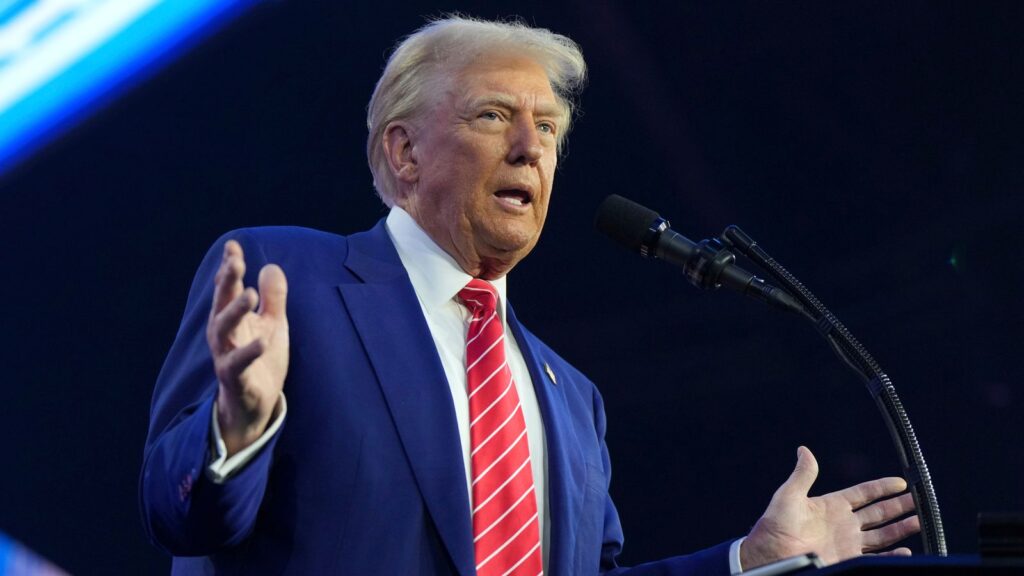Few political figures in recent history have captured as much attention—both supportive and critical—as Donald J. Trump. Since first announcing his presidential run in 2015, Trump has become an enduring and polarizing figure who reshaped the Republican Party (GOP) in significant ways. Whether you love him, are critical of him, or lie somewhere in between, there is no denying the lasting impact he has made on Republican politics.

1. The Pre-Trump GOP Landscape
Before Donald Trump’s rise, the Republican Party was defined by traditional conservative values—lower taxes, smaller government, a strong national defense, and social conservatism. Leaders like Ronald Reagan and George W. Bush championed free-market policies and international engagement (albeit sometimes controversial). By the time Trump entered the scene, many Republican voters felt disillusioned by the political establishment. They wanted an outsider who would challenge the status quo in Washington D.C.
2. The Outsider Revolution
Trump’s 2016 presidential campaign was anything but ordinary. He tapped into populist sentiments by criticizing political elites—both Democrats and Republicans—and promising to address issues like illegal immigration, trade deficits, and the perceived decline of American influence on the world stage.
Key Points of His Campaign:
- Immigration: Building a border wall and reducing illegal immigration became rallying calls.
- Trade: Opposed long-standing trade agreements, arguing they hurt American manufacturing.
- Foreign Policy: Advocated putting “America First,” often challenging global alliances and institutions.
This populist rhetoric energized voters who had felt unheard for decades, thereby forging an intense base of support that became a cornerstone of his campaign and presidency.
3. Shifts in Republican Party Identity
Following Trump’s successful 2016 campaign, the Republican Party underwent several notable shifts:
- Rhetorical Changes: Traditional Republican messaging about smaller government and tax reform was supplemented (and sometimes overshadowed) by confrontational or populist language.
- Focus on “America First”: Trump’s slogans prioritized national sovereignty and economic protectionism over long-standing alliances and international cooperation—concepts that had previously been embraced by many GOP leaders.
- Heightened Partisanship: Public discourse became more polarized, contributing to an “us vs. them” mentality that galvanized Trump supporters and critics alike.
Even after his presidency, these shifts have continued to influence the way Republican politicians campaign and communicate with voters. Many candidates adopted Trump’s style—some wholeheartedly and others with caution—recognizing his sway over a passionate segment of the voter base.
4. Tensions Within the GOP
Not everyone in the Republican Party embraced the Trump era with open arms. Some traditional conservatives and establishment figures voiced concerns about Trump’s style, questioning whether his tone and public demeanor aligned with conservative values. This tension created internal divides:
- Never Trumpers: A minority group within the GOP decided they could not support Trump, citing disagreements with his policies, approach, or public behavior.
- Pro-Trump Conservatives: A large segment believed Trump brought a refreshing directness and was effectively addressing what they saw as long-overlooked issues.
- Fence-Sitters: Others were pragmatic, trying to balance Trump’s appeal with more conventional Republican tenets.
As a result, the GOP sometimes presented a fragmented front during Trump’s presidency, especially when controversial events occurred.
5. Trump’s Enduring Influence
Even though Trump’s presidency ended in January 2021, his influence on the Republican Party remains evident:
- Primary Politics: Candidates running in Republican primaries often compete to showcase their alignment with Trump to tap into his loyal voter base.
- Policy Stances: Immigration, trade, and America-first foreign policy remain cornerstones within the GOP, with many adapting to or adopting these stances.
- Fundraising Power: Trump’s popularity with grassroots supporters translates into significant fundraising potential, which the GOP continues to leverage.
6. Looking Ahead
Political observers frequently debate whether the Republican Party will eventually pivot away from Trump’s brand of politics or continue to embrace it. For some, Trump’s leadership style is exactly what the party needs to remain connected to a broad swath of conservative and populist voters. Others believe a return to more traditional conservatism is necessary to unite a wider base and reclaim moderate voters.
As the political landscape evolves, the Republican Party faces critical questions about its identity, messaging, and strategy in both local and national elections. Regardless of the path the GOP ultimately takes, Trump’s imprint on the party—and on American politics overall—is likely to be felt for years to come.
Donald Trump’s unprecedented political journey fundamentally transformed the Republican Party by introducing populist themes, amplifying grassroots engagement, and creating internal divisions. Love him or loathe him, his influence extends beyond his time in office. By understanding this evolution, observers can better appreciate the ongoing dynamics within the GOP and the broader American political landscape.
